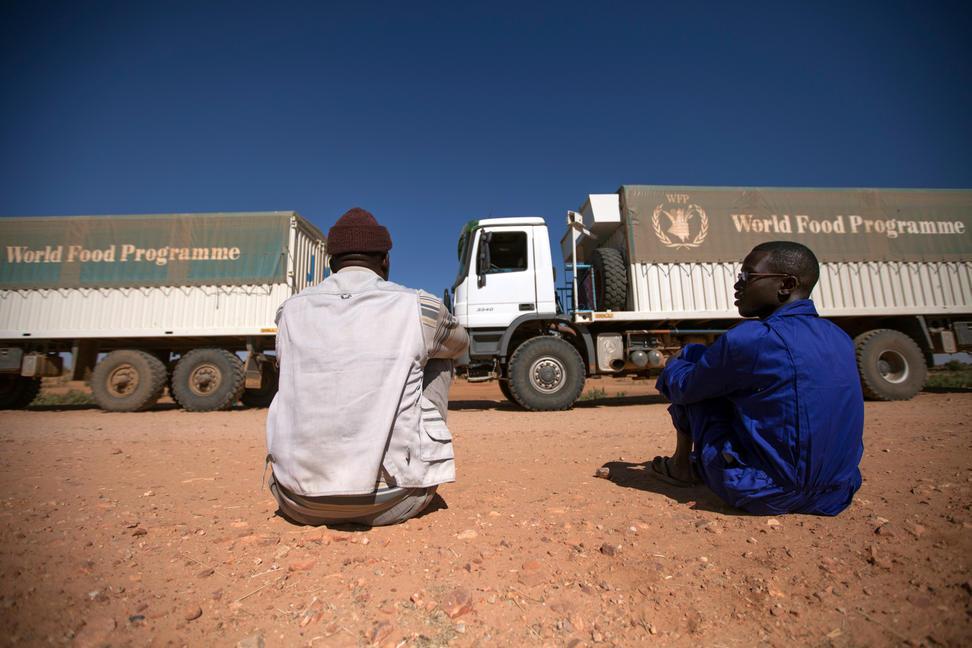Q&A

Humanitarian Monitor is a project that was launched in April 2020 by Russian experts in international relations. The mission of the Humanitarian Monitor project is to raise awareness of Russian and foreign audiences about various aspects of international humanitarian cooperation and Russia's contribution to international development assistance. At present, the project exists in the format of an expert Telegram channel and an interactive portal "Humanitarian Map".
The Humanitarian Map is one of the tools to implement the mission of the Humanitarian Monitor project, which is to raise awareness among Russian and foreign audiences about Russia's contribution to international development.
The notion of international development assistance is based on provisions of the Concept of State Policy of the Russian Federation in the Sphere of International Development Assistance (approved by the Decree of the President of the Russian Federation of April 20, 2014, № 259) and, for the purposes of the Humanitarian Map project, includes
- official assistance provided at the State level on a bilateral and multilateral basis, as well as humanitarian initiatives undertaken by private sector companies, non-profit organizations, and individuals;
- humanitarian, technical, financial, and other assistance to facilitate sustainable socio-economic development of recipient States, help resolve crises caused by natural and man-made disasters and other emergencies, internal and/or international conflicts, as well as provide assistance to individuals and organizations in overcoming the consequences of such situations.
ОThe answer to this question is formulated, among other things, in the Concept of State Policy of the Russian Federation in the Sphere of International Development Assistance (approved by the Decree of the President of the Russian Federation of 20, April 2014, № 259). Here are some quotes:
"Based on its historical responsibility for the formation of a modern system of international relations and its further improvement, the Russian Federation considers the promotion of international development as one of the effective mechanisms for solving global and regional problems and countering new challenges and threats."
"Russia supports the aspiration of the international community for the sustainable socio-economic development of all States, which is the foundation of the modern system of international stability and collective security."
"Russia pursues an active and purposeful policy in the field of international development assistance, which meets the national interests of the country and contributes to stabilizing the socio-economic and political situation in partner States and establishing good-neighborly relations with neighboring States, helps eliminate existing and prevent potential hotbeds of tension and conflicts, primarily in the regions adjacent to the Russian Federation, as well as strengthens its positions in the international community and, eventually, creates favorable conditions for the country's development".
Data about every country are indicated on the map and in "country profiles." They are gathered from official Internet sources, including official websites of Russian and foreign State bodies, international organizations and their social network accounts, sites of news agencies, private sector organizations that contribute to providing international development assistance, as wells as from other sources. At the moment, the database of sources for the Humanitarian Map includes over 400 items.
The search for information is carried out by project administrators to provide the users of the Humanitarian Map with an up-to-date overview of Russia’s IDA facts, primarily with those from official sources. Other sources can be used as clarifying and/or complementary ones. References to the sources that were used are indicated in "country profiles."
To this end, there is a possibility to add information to the map on the proposal of every interested user. The crowdsourcing principle of data collection is implemented through the function Add Information to the Map.
Project administrators add and update the information displayed on the map on a regular basis. The list of updates is available on special tab. 
To this end, there is a possibility to add information to the map on the proposal of every interested user.
The crowdsourcing principle of data collection is implemented through the function Add Information to the Map. After receiving a request, project administrators will make sure that the information is reliable, checking its completeness and compliance with the project methodology. Then, if the applicable criteria are satisfied, the proposed fact of assistance can be displayed on the "Humanitarian map".
The Humanitarian Map project does not compare the volumes of the Russian IDA by recipient countries. To make a meaningful comparison, it is necessary to have data on how much funding has been allocated to a particular form of humanitarian or development assistance. In the absence of such data, there is a risk of incorrect display of facts, since, for example, multiple aid shipments to country A may be smaller than one large shipment to country B in terms of funds channeled.
Further development of the project involves adding data on the distribution of facts of assistance by world regions to the Information Dashboard. That will allow ranking the regions by the number of reporting units (facts of assistance) stored in the Humanitarian Map database.
For more information about how the data is displayed on the map, see the Methodology section.
At present, the Humanitarian Map contains information about the Russian IDA starting from January 1, 2020. In general, the functions of the Humanitarian Map allow us to look through data for particular time periods equal to one year.
The project team considers valuable to demonstrate on the Humanitarian Map the whole range of Russian humanitarian assistance to foreign countries by the government, businesses, and non-profit organizations, including private humanitarian initiatives. The scope of this assistance, as well as its composition, may significantly differ from case to case. Yet, every fact of Russian assistance that is known to project administrators and consistent with the project methodology is taken into account and displayed on the Humanitarian Map.
